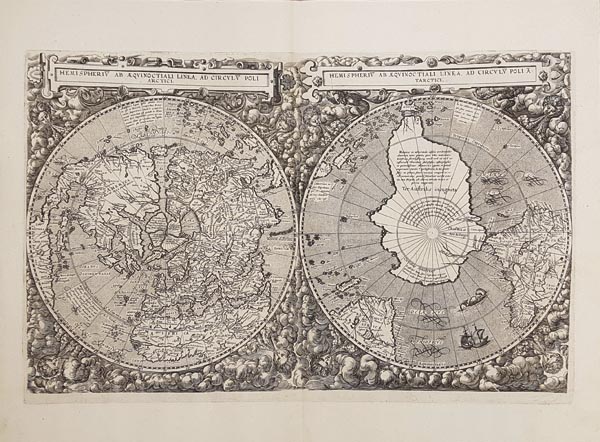Ritka rézmetszetű világtérkép, amely a két félgömböt sarki vetületeken ábrázolja. Kizárólag Cornelis de Jode Speculum Orbis Terrarum című művének 1593-as, antwerpeni második kiadásában jelent meg, és a XVI. század leglátványosabb térképei között tartják számon (nem véletlenül használta Shirley is bibliográfiai művének borítóján). A lap Gerard de Jode halála után készült el, és bár fia eltért az általa kedvelt – szív alakú – vetülettől, továbbra is szél-fejekkel és felhőkkel gazdagon díszített kerettel övezte azt. Kartográfiai munkája során elsősorban Guillaume Postel 1581-es térképére, és egy ismeretlen eredetű 1581-es földgömbszelvény-kiadásra támaszkodott, ami szokatlan körvonalakat eredményezett (az egyenlítőhöz közeledve a felszíni alakzatok kiszélesednek). Az északi féltekén a korabeli feltételezések szerint Amerikát és Ázsiát elválasztó Anián-szorost és az északnyugati átjárót is feltüntette. A déli félteke nagy részét elfoglaló „Terra Australis Incognita”-t – amely keleten egészen az indonéz szigetvilágig terjed – is az akkoriban felállított hipotézisek alapján rajzolták meg. Mérete: 330 x 530 (420 x 575) mm. Paszpartuban.
Dimensions: 330 x 530 (420 x 575) mm.
